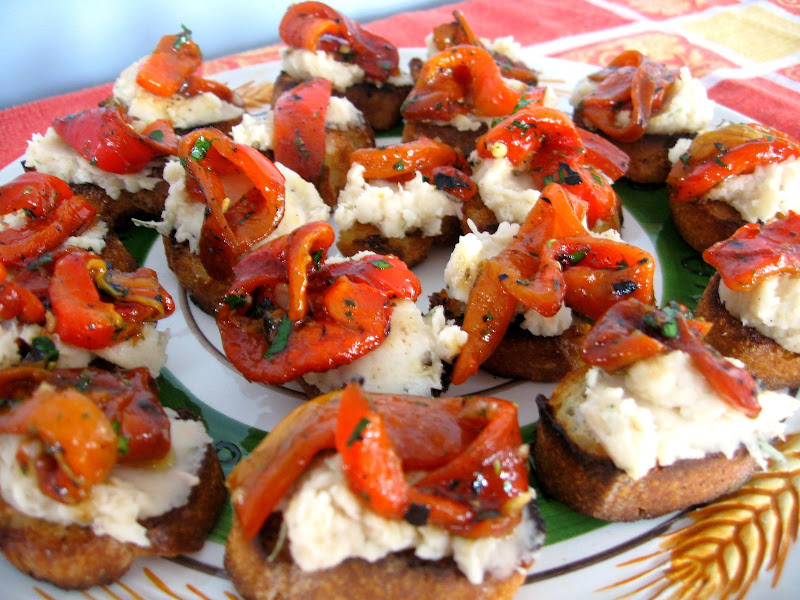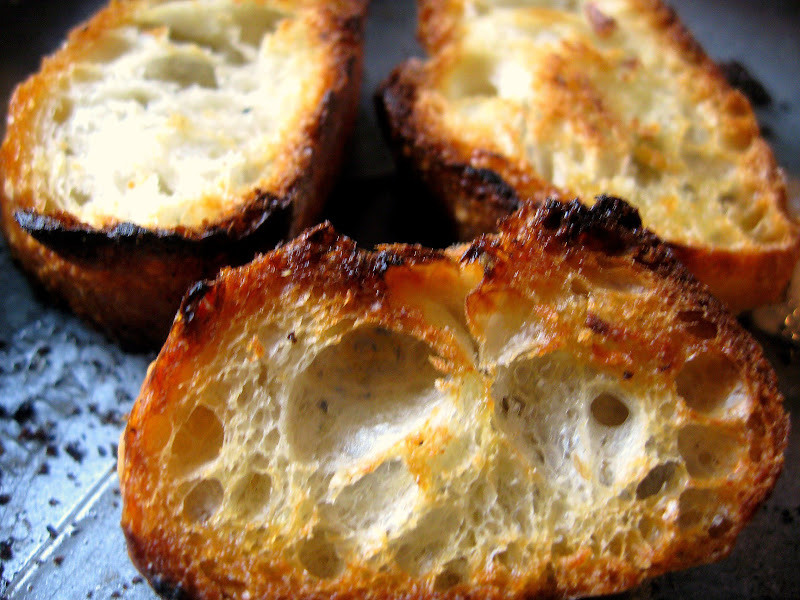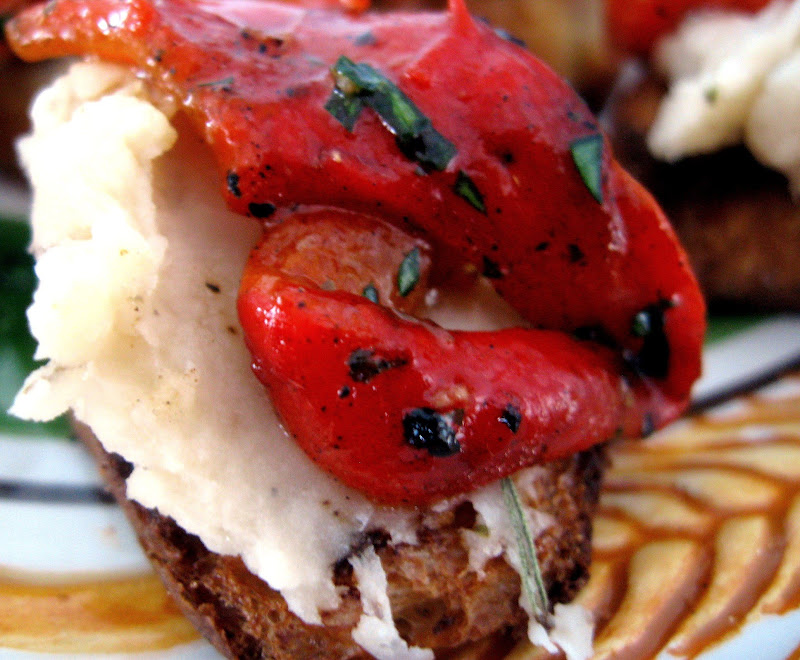
Crostini literally means “little toasts” in Italian and they are Italian appetizers or tapas consisting of flavorful toppings. Crostini are usually made from Italian baguette, sliced about 1/2 thick and quickly toasted or grilled. In the US, the word bruschetta is used to refer to crostini with a fresh tomato, basil, salt, and pepper topping. Bruschetta, like crostini, can be topped with an almost limitless list of ingredients. Here’s a quick recipe for making Italian toast.
Here’s the technical distinction between bruschetta and crotini:
Bruschetta, from the Italian “bruscare,” which means “to roast over coals,” refers to the bread, not the toppings. Rather large slices of bread are grilled, rubbed with garlic, then drizzled with olive oil. They are usually topped with tomatoes and basil, though other toppings from meats to vegetables can be used.
Crostini, “little toasts,” are thinner, smaller slices of bread (usually from a baguette) that are always toasted then piled with various toppings, such as vegetables, savory spreads, and cheeses.
- Extra virgin olive oil
- Kosher or Sea salt
- Freshly ground black pepper
- Dried oregano
- Dried thyme (optional)
- Garlic (optional)
- Hot red pepper flakes (optional)
- Start by slicing a good quality baguette into ½ inch pieces and set on a large cookie pan. Drizzle olive oil on one side of the bread followed by the salt, pepper, and dry oregano.
- Place the cookie sheet in your oven and set to broil and watch the bread carefully; as soon as you begin to see the bread turn brow remove from the oven.

I often top our crostini with: Roasted peppers , Bean spread(s) made from cannellini or chickpeas (hummus), Tomato Salad, Cheese or salumi, or additional herbs including rosemary, parsley, basil, etc.
Crostini can keep in a cool and dark environment for about 4-5 days.



I had everything in my pantry when I read this and it became a big part of my dinner earlier this week. So simple and so good.
Pesto and Roasted Pepper Bruschetta
One of the most attractive principles of Italian cooking is that with a few simple, yet high quality, ingredients one can create wonderful dishes that are cheap, healthy, and exceptionally flavorful. The simple bruschetta, with an almost limitle…
Italian Truffles (Tartufi)
Truffle Primer One of my favorite aspects of visiting Italy in the Summer and Fall months is the abundance of festivals scattered throughout the country. In Calabria alone, for example, the summers months include food festivals focused on b…
Food Guide to an Italian Christmas
(photo: various Christmas food plates: left to right string beans, baked broccoli, bacala in tomato sauce, mussels in red wine tomato sauce, zeppole, fried calamari, stuffed squid, baked flounder, salad, etc.)At this point in the holiday frenzy, you’r…
For our church Easter Brunch they loo and taste great
what the difference between crostini and Bruschetta in Italia?
Here’s the technical distinction:
Brushcetta, from the Italian “bruscare,” which means “to roast over coals,” refers to the bread, not the toppings. Rather large slices of bread are grilled, rubbed with garlic, then drizzled with olive oil. They are usually topped with tomatoes and basil, though other toppings from meats to vegetables can be used.
Crostini, “little toasts,” are thinner, smaller slices of bread (usually from a baguette) that are always toasted then piled with various toppings, such as vegetables, savory spreads, and cheeses.
Exactly right, but not part of your recipe.
ma recette fétiche c’est pain frotté a l’ail et tomate mozzarela origano sec huile D’Ol.
mais ce soir c’était chevre et poireaux baguette de mon jardin!
bon apetit a tous
They are not the same and your recipe does not address gruschetta, Italian garlic bread. Crostini are seasoned before toasting and bruschetta is seasoned afterwards by rubbing with raw garlic, then drizzling a little oil and sprinkling a little sea or kosher salt. That’s bruschetta; toppings are extra and perhaps expected, but be sure to grill the bread and rub with raw garlic, otherwise it’s not bruschetta. My reference for this is Marcella Hazan, “Classic Italian Cooking”, Italian garlic bread.